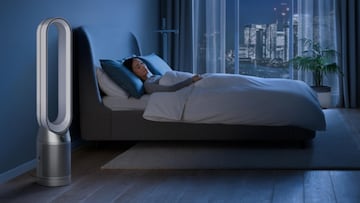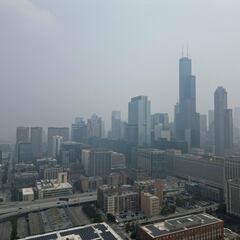How to protect your home from unhealthy air quality
The air quality across swaths of North America has deteriorated to unhealthy, and worse, due to wildfires. Here’s some tips to protect the air in your home.

Massive plumes of smoke have been sent drifting from hundreds of blazes over the course of June, there have been nearly 3,000 since the beginning of the year in Canada. Millions of residents across the United States and Canada are watching as a thick haze from wildfire smoke fills the air in their communities.
The pollution it is causing has deteriorated air quality to unhealthy levels, even hazardous, prompting authorities to issue health alerts and action days for elevated levels of particulate matter (PM2.5). People are advised to stay indoors with the windows and doors shut to avoid harmful levels of the fine particles from getting in. But what about the air quality inside your house if you can’t ventilate it with fresh air from outside?
How to protect your home from unhealthy air quality
The Environmental Protection Agency recommends that the most effective way to improve indoor air quality is source control. This can be more cost effective even than ventilation, which isn’t an option for those dealing with the wildfire smoke. Since it is recommended that you stay indoors with the windows and doors sealed, you should avoid smoking in your house or cooking in a way that will produce pollutants, such as frying foods.
In order to remove particles from the air in your house, you can also look into using a portable air cleaner or Furnace and HVAC filters. The last of these options may not be desirable or practical as HVAC systems only operate on average 25 percent of the time. The system would have to run for longer periods of time, raising electricity costs as well as affecting household humidity when in cooling mode.
If using your air conditioning, you should set it to recirculate, if possible, to avoid drawing in outside air. For central air conditioning systems, the EPA recommends installing an MERV 13 or higher high-efficiency filter. HEPA filters are typically not apt for use with air conditioning systems.
Building a Corsi-Rosenthal box portable air filter comes down to duct-taping together a set of furnace filters and a box fan. https://t.co/DrFDrdgBqL
— Smithsonian Magazine (@SmithsonianMag) April 8, 2023
Related stories
When considering which portable air cleaner you should buy, keep in mind the devices clean air delivery rate (CADR). This is the amount of particles the air cleaner can remove for a given space. This is generally listed on the side of the package. A rule of thumb for the minimum CADR that you need for a room with eight foot ceilings is a ratio of 6.5 cubic feet per minute (CFM) for every 10 square feet of room according to the EPA. Higher ceilings would require a greater CADR.
If you are a Do-It-Yourselfer, you could even build your own Corsi-Rosenthal box portable air cleaner using MERV 13 or higher filter. Not only is this a cheaper option than HEPA devices, but in at least one study the Corsi-Rosenthal box actually outperformed the high-efficiency particle air filter. It’s believed that this was due to the high flow from the fans compared to their commercial counterparts.


